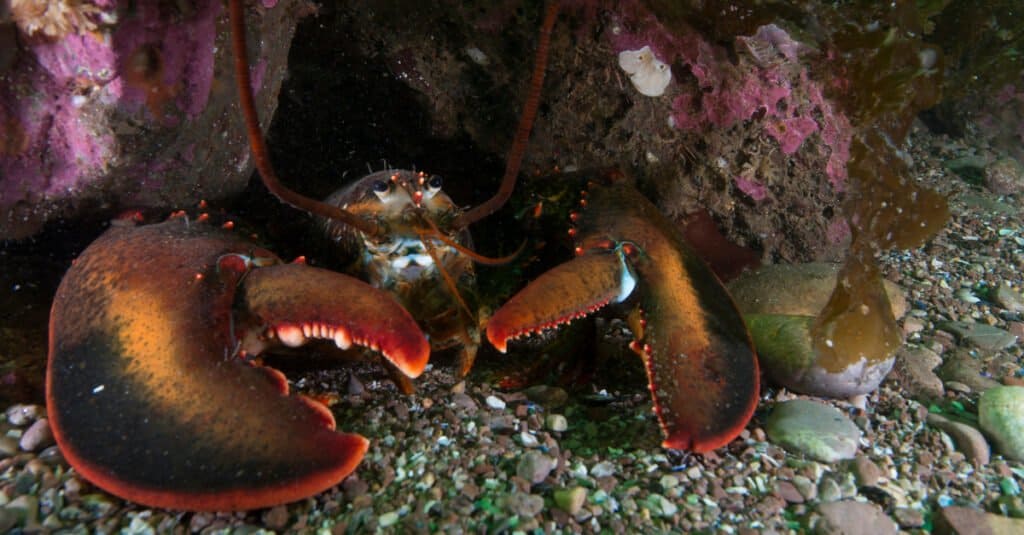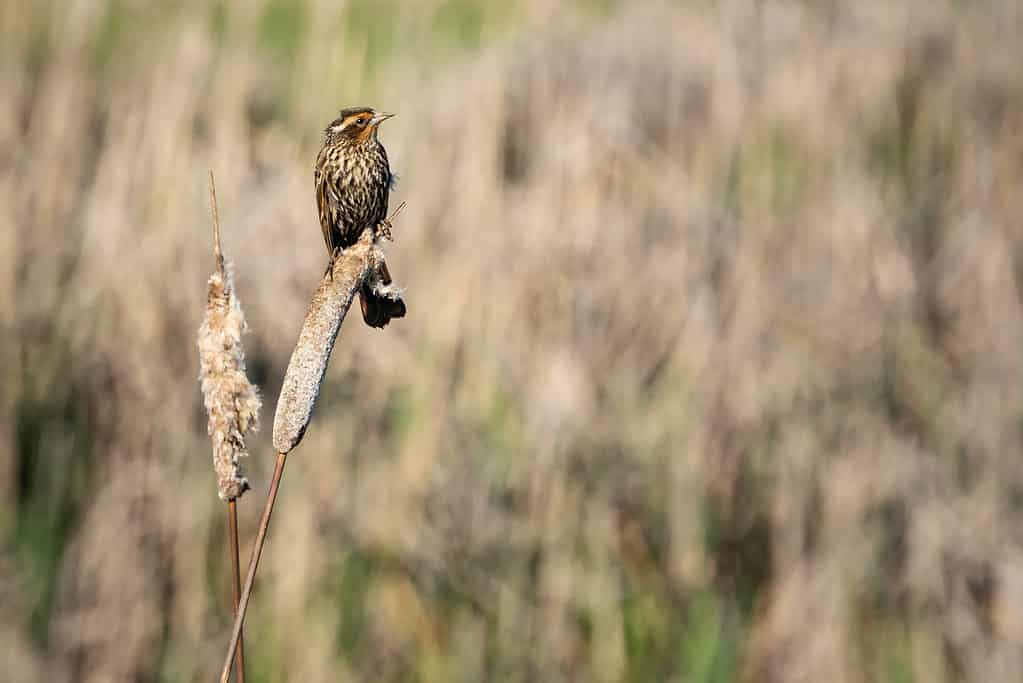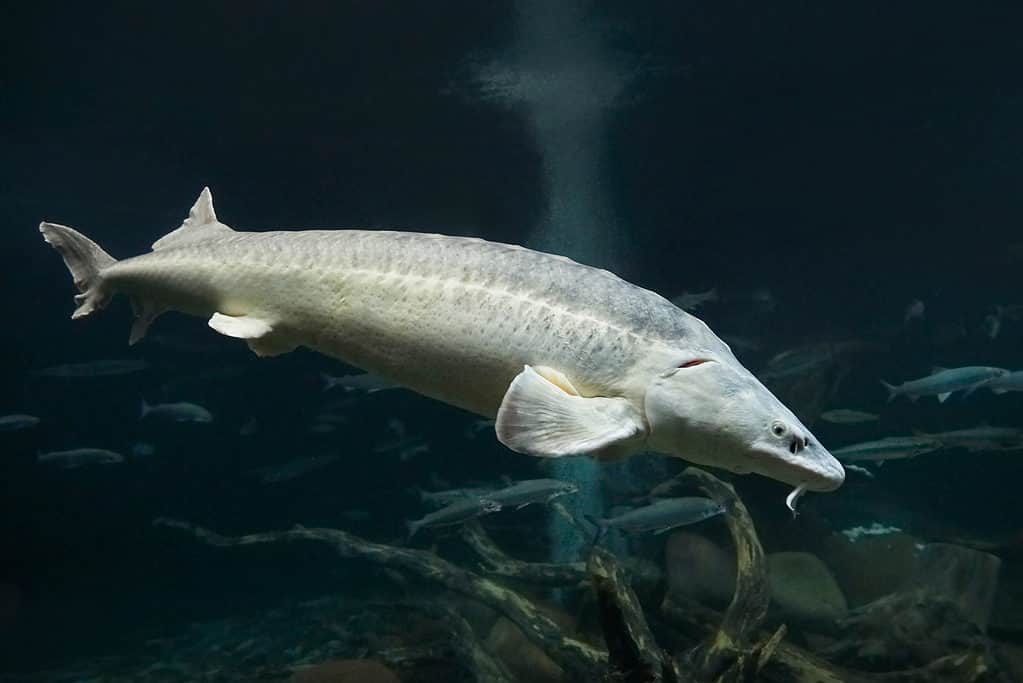A semi-enclosed arm of the North Atlantic Ocean, the Long Island Sound lies between New York and Connecticut in the United States of America. The Sound covers some 1,180 square miles, 90 miles long and between 3 and 20 miles wide, depending on the location.
How Deep is the Long Island Sound?

The Long Island Sound lies between New York and Connecticut.
©Kyle Lee/Shutterstock.com
Compared to many other bodies of water in the world, the Long Island Sound may be considered shallow by some with a maximum depth of 63 feet on average. The specific depth varies by location within the Sound, of course, with depths 20 feet and under in the western Sound. In the central Sound, 65 feet has been recorded. At the Race portion of the sound where the rocky bottom exists in the eastern sound, a small portion of the Sound goes as deep as 350 feet.
What Lives at the Bottom of the Long Island Sound?
A huge variety of wildlife lives in and around the Sound Island Sound.
Fish and Shellfish Species

American lobsters and many other crustaceans dwell at the bottom of the Long Island Sound.
©RLS Photo/Shutterstock.com
- Many-ribbed jellyfish
- Porgy
- Winter flounder
- Summer flounder
- Windowpane flounder
- Four-spot flounder
- Butterfish
- Northern striped sea robin
- Little skate
- Southern striped sea robin
- Atlantic silversides
- Black sea bass
- Blackfish
- Cunner
- Smooth dogfish
- Bluefish
- Menhaden
- Atlantic bonito
- False albacore
- Striped bass
- White perch
- Blueback herring
- Alewives
- American shad
- Hickory shad
- Blue shark
- Mako shark
- Hammerhead shark
- Thresher shark
- Sand tiger shark
- Sandbar shark
- Spiny dogfish
- Rough periwinkle
- Northern yellow periwinkle
- Blue mussel
- Eastern oyster
- Atlantic slipper shell
- European periwinkle
- Hard clam
- Mud snail
- Atlantic bay scallop
- Atlantic oyster drill
- Northern moon snail
- Atlantic moon snail
- Knobbed whelks
- Channeled whelks
- Salt marsh snail
- Blue crab
- Red crab
- Jonah crab
- Green crab
- Shrimp
- Atlantic rock crab
- Hermit crab
- Fiddler crab
- Japanese shore crab
- Spider crab
- Lady crab
- Mole crab
- Sand shrimp
- Glass shrimp
- American lobster
Mammal, Amphibian, and Reptile Species

Harbor seals chill on the sandy beach.
©iStock.com/AndreAnita
- Masked shrew
- American short-tailed shew
- Least shrew
- White-footed mouse
- Meadow vole
- Raccoons
- Red fox
- Muskrat
- Long-tailed weasel
- Meadow jumping mouse
- Short-tailed weasel
- Dolphin
- Harbor seal
- Gray seal
- Long-finned pilot whale
- Harbor porpoise
- Finback whale
- Diamondback terrapin
- Leatherback turtle
- Green turtle
- Loggerhead turtle
- Green frog
- Bullfrog
- Pickerel frog
- Common snapping turtle
- Spotted turtle
- Painted turtle
- Northern water snake
- Fowler’s toad
- American toad
- Hognose snake
Bird Species

The saltmarsh sparrow is one of the many bird species living around the Long Island Sound.
©iStock.com/wirestock
- Osprey
- Herring gull
- Great black-backed gull
- Common tern
- Double-crested cormorant
- Turnstone
- Sandpiper
- Willet
- Yellowleg
- Seaside sparrow
- Saltmarsh sparrow
- Mallard
- Black duck
- Heron
- Clapper rail
- Black-crowned night heron
- Snowy egret
- Piping plover
- Least tern
- Yellow warbler
- Red-eyed vireo
- Red-winged blackbird
- Carolina wren
- Broadbill
- Greater scaup
- Canada geese
- Common goldeneye
- Bufflehead
- White-winged scoter
- American wigeon
- Long-tailed duck
- Mute swan
- Gadwall
- Northern pintail
- Green-winged teal
- Northern shoveler
- Ruddy duck
- Redhead
- Ring-necked duck
- Snow geese
- Brant
Rare and Endangered Animals Near the Long Island Sound

The shortnose
sturgeon
is a large fish that can grow up to 40 inches.
©pixel creator/Shutterstock.com
Two species known to live in the Long Island Sound area have been deemed endangered or even extinct.
The first is the eastern spadefoot, a toadlike amphibian that hasn’t been recorded in a confirmed sighting since 1935. The beige or off-white coloration of the amphibian is marked with a green pattern and tiny orange dots. The toad-like animal isn’t technically endangered overall but has been determined as “rare” in the region of the Long Island Sound due to its nearly 90-year disappearance from the area.
The other species is a truly endangered one, recognized by the Endangered Species Act – the shortnose sturgeon. Only about 900 of the fish species live downstream of the Holyoke Dam. The fish typically remain in their natal rivers but they head into the Sound and other estuarine waters on their way to the Atlantic Ocean.
Interesting Facts
- The Long Island Sound is considered a tidal estuary, which means it contains both freshwater and saltwater.
- 90% of the freshwater in the Sound comes from rivers in Connecticut, including the Connecticut, the Thames, and the Housatonic Rivers.
- The saltwater in the Sound comes via the Atlantic Ocean.
- Approximately 1,300 square miles of land and water make up the Long Island Sound.
- Nearly 600 miles of coastline edges the Long Island Sound.
- The Long Island Sound contains an estimated 18 trillion gallons of water. This would be enough to supply the entire city of New York with water for over 30 years.
- At its widest point, the Long Island Sound is 21 miles across, and the length is 113 miles.
- Something like 300,000 to 500,000 boats visit the Sound every single day of the summer.
- Approximately 95% of the population of the state of Connecticut is within 50 miles of the Long Island Sound.
- The Long Island Sound has two low and two high tides every day.
Where is Long Island Sound Located on a Map?
Long Island Sound, a tidal estuary and marine sound, is neatly tucked mainly between the U.S. state of Connecticut to the north and Long Island in New York to the south. It connects to the Atlantic Ocean, forming a significant coastal waterbody in the region.
Here is Long Island Sound on a map:
The photo featured at the top of this post is © AYIGITB/Shutterstock.com
Thank you for reading! Have some feedback for us? Contact the AZ Animals editorial team.






